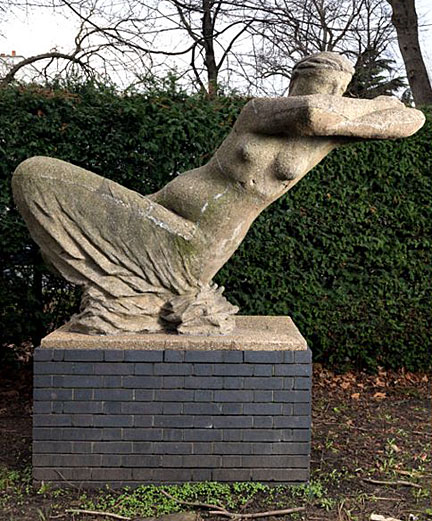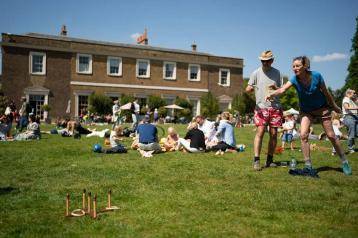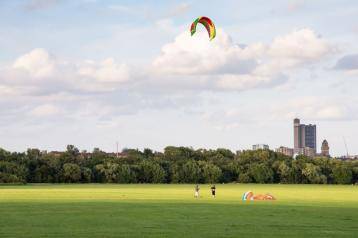
One of the most intriguing public sculptures in the capital – Hammersmith’s Leaning Woman – has been granted Grade ll listed status.
The gravity-defying 1959 sculpture by Karel Vogel, apparently of a classical Greek figure doing an extraordinary sideways limbo dance, was originally commissioned by London County Council’s patronage of the arts scheme, which had earmarked £20,000 a year to buy public works of art.
Sculpted in concrete – a trendy material of choice for post-war artists, she was sited in North Verbena Gardens near the foot tunnel under the A4 by St Peter’s church, to offset the dreariness of the Great West Road.
Motorists once joked that she was leaning to warn them to keep their speed down.
The Leaning Woman was installed on a leftover piece of land marooned by the road’s expansion in the early 1960s.
The sculpture, referred to by some locals as the Dancing Lady, is one of 41 pieces of post-war public art in England given protection on the recommendation of Roger Bowdler, Historic England’s director of listing.
"These sculptures have become a precious national collection of art which we can all share,” he explained. "They enrich our lives, bring art to everyone and deserve celebration."
It was one of the last works by Vogel, a Czech-born artist and art teacher, who lived from 1897 to 1961.
He fled the Nazis in 1938, coming to England and teaching sculpture at several schools and colleges. His work featured prominently at the 1951 Festival of Britain, and he also exhibited at the Royal Academy summer exhibition.




